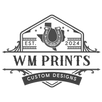In recent years, the medical field has witnessed unprecedented innovations with the advent of 3D printing technology. This transformative power has opened new horizons in medical treatments, improving patient outcomes and reducing costs. 3D printing has made significant inroads in prosthetics, organ printing, and surgical models, redefining possibilities within healthcare systems.
Revolutionary Prosthetics
One of the most significant impacts of 3D printing in medicine is its contribution to prosthetic limbs. Customization is crucial for prosthetic devices, and 3D printing allows for tailored solutions that fit individual needs and specifications. This personalization ensures a better fit and comfort for patients, leading to enhanced mobility and quality of life. Moreover, the cost-effectiveness of 3D printing reduces the financial burden on patients who require these life-changing devices.
Customized Surgical Models
Surgical preparation has been revolutionized by 3D-printed anatomical models. These precise replicas are created from patient-specific imaging data, allowing surgeons to visualize and practice complex procedures before entering the operating room. This proactive approach not only enhances surgical precision but also minimizes risks, ultimately contributing to improved patient outcomes.
Bioprinting: The Future of Organ Transplants
Perhaps the most futuristic application of 3D printing is bioprinting, the possibility of creating artificial organs. Although this technology is still in its developmental stages, researchers are optimistic about its potential to address the organ shortage crisis. Imagine a future where patients in need of organ transplants no longer face long waiting lists but instead receive organs printed with their own cells, eliminating compatibility and rejection issues.
The Role of 3D Printing in Clinical Settings
The adaptation of 3D printing within clinical environments has been facilitated by products designed to support the various elements of this technology. For example, organizational tools such as the Lyman Type prep tools holder ensure that essential preparation equipment is properly stored and readily accessible. This enhances the efficacy of 3D printing processes in medical settings, from the lab to the clinic.
Explore more about the transformative world of 3D printing and other innovative solutions by visiting WM Prints. Here, various products are designed to aid medical professionals and patients alike in navigating this new era of healthcare.
3D printing continues to evolve, and with its growth, the possibilities for medical advancements appear to be boundless. As research and technology advance, we can expect even more groundbreaking innovations that will continue to shape the future of healthcare.
Feel free to visit WM Prints to explore further.





